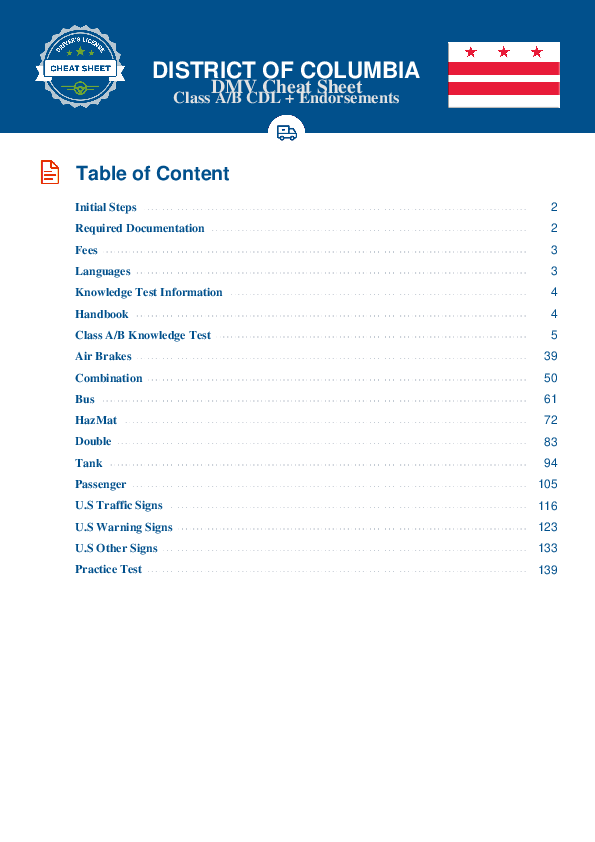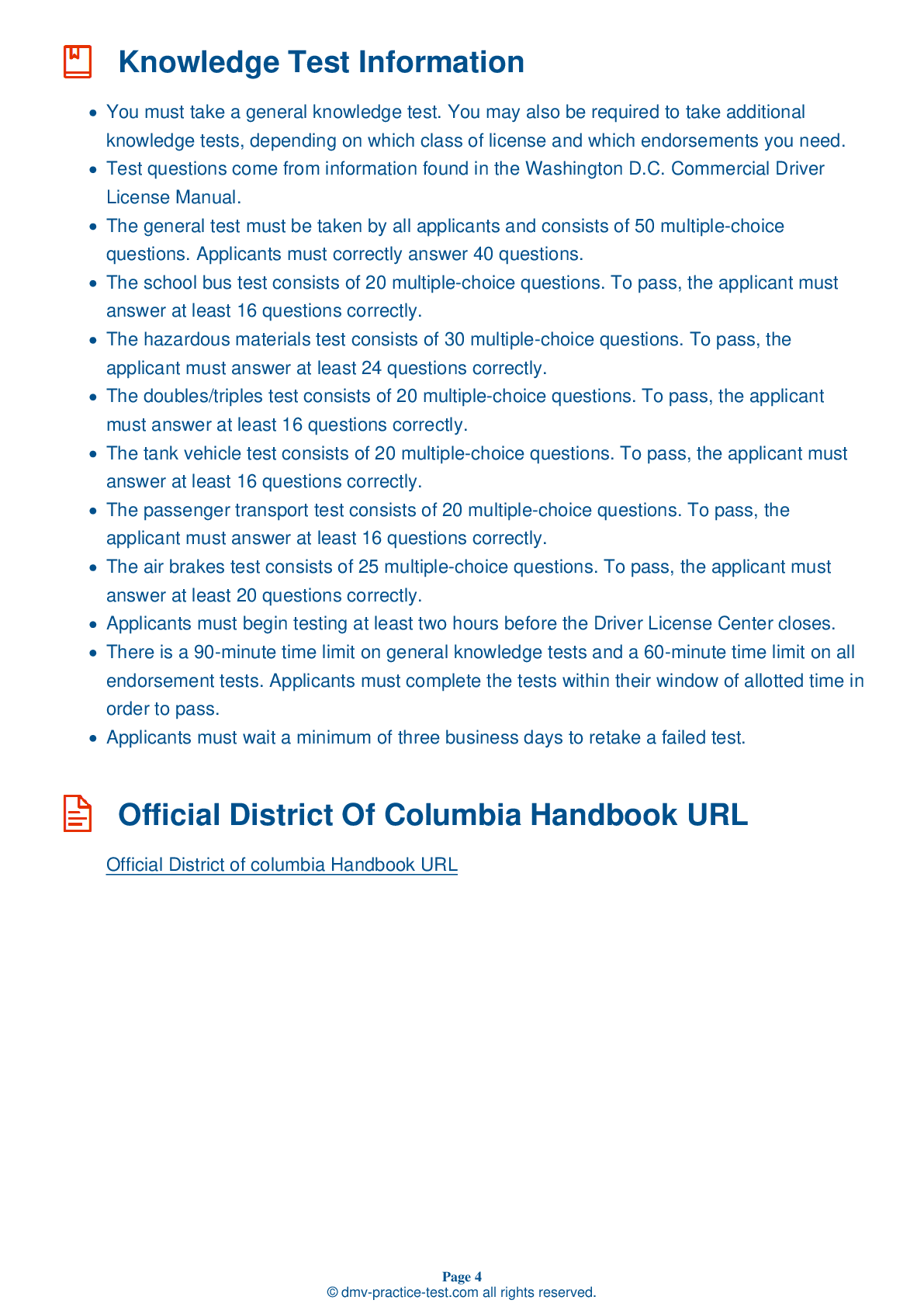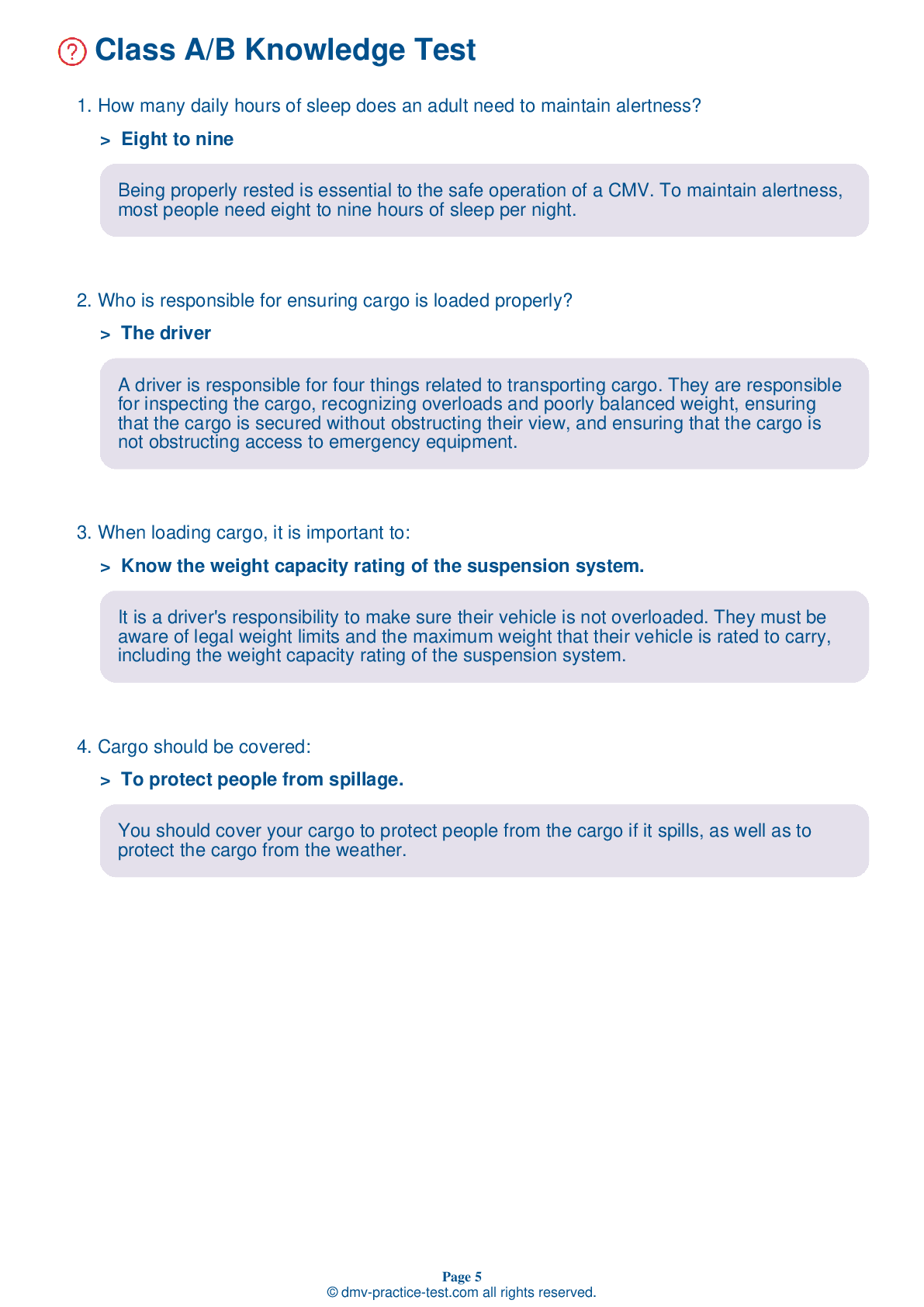Tank Endorsement Test | District Of Columbia 2025 #2 Page 2 of 3
Train for FREE with our District Of Columbia tank endorsement practice test online. The official exam test consists of several obligatory parts, with all of them checking your knowledge of different blocks of road rules. If you need to obtain a DC tank license in 2025, practice as much as possible. Free sample tests published on our website will help you check and improve your knowledge and boost your grades. Please bear in mind that DMV requirements for issuing a CDL tank vehicle endorsement may vary from state to state.
8 . How many air lines does a combination vehicle have?
Every combination vehicle has two air lines: the service line and the emergency line.
9 . When loading containers of hazardous materials, you should not use:
When loading or unloading containers of hazardous materials, you should not use hooks, or any other tools that could damage containers or packaging.
10 . When preparing to enter traffic, you should do all of the following, except:
When crossing or entering traffic, bear in mind the size of your vehicle and the distance it will need to accelerate. Wait for a gap in traffic that is large enough to accommodate your vehicle before you begin to accelerate. Remember that you will need more room to accelerate if your vehicle is heavily loaded. Before crossing a road, be sure that you can get all the way across without interfering with traffic.
11 . If a product requires a "Poison Inhalation Hazard" placard, the placard must be used when transporting:
For applicable materials, the "Poison Inhalation Hazard" placard and the appropriate hazard class placard must always be displayed, even for small amounts of the materials.
12 . When entering a foggy area, you should:
Always slow down before entering a foggy area. Use low beam headlights, avoid passing others, and avoid stopping on the side of the roadway. It is safest to completely avoid driving under foggy conditions, if possible.
13 . If loading corrosive materials, you should not:
Containers of corrosive materials should be kept in their correct upright positions. They should not be dropped or rolled.
14 . Slippery roadways usually:
It takes a longer distance to stop a vehicle on a slippery road than it does on a dry road. Use caution when driving under conditions that could cause a road surface to become slippery.
See the exact questions that will be on the 2025 District Of Columbia DMV exam.
99.2% of people who use the cheat sheet pass the FIRST TIME
Lillian MCcranie explains how our CDL study guide was helpful in passing the exam and recommends it to everyone.
Cameron tells us how he purchased the CDL exam, and found it to be a useful tool which helped him pass the exam and find a job.



